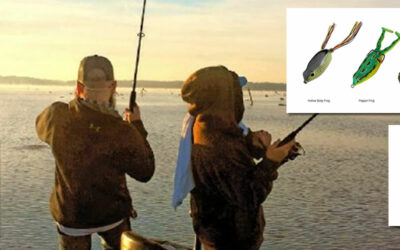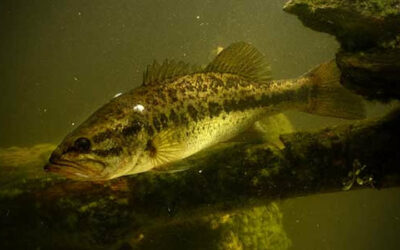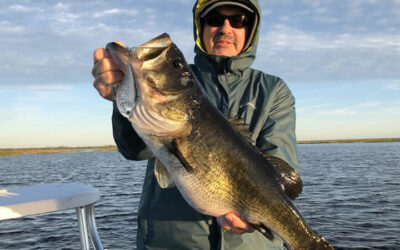The Texas rig is one of the most popular soft plastic rigging systems for bass fishermen. The rig set contains a bullet sinker, a soft plastic lure, and a hook.
This rig was designed in the middle of the 20th century to catch bass with artificial worms under a thick cover. Soft plastics are a popular lure for Texas-style rigging, but the usage of critters, craws, minnows, and other artificial baits is also increasing. These rigs perform well in brush, weeds, and rock and may be fished in myriad ways.
Understanding the rig’s benefits and how it works allows a pleasant fishing experience wherever you decide to cast a line. The Texas rig is a sturdy setup and is effective all year round. Knowing the little annoyances of this setup will significantly boost your chances of obtaining bites and landing more bass.
After reading this article, you may better understand what exactly is a Texas rig for bass, how to rig one, and why to choose to employ a Texas rig to keep catching bass!
What Is a Texas Rig for Bass Fishing?
By far, the most popular rubber worm rig is the Texas Rig. It’s generally employed for its weed-free characteristics and provides the worm with a lovely, straight profile. A Texas Rig is traditionally weighted. While exploiting the weedless aspect of the rig, many fishermen rig their worms “Texas Style” without a sinker.
It is a simple worm rig requiring a few items: rubber worms, hooks, and bullet weights. Depending on the conditions, you may use a weighted stopper. The hook is inserted into the bait’s tip and then spun, with its point buried back into the soft plastic’s body, making it extremely hard to snag.
Why Choose a Texas Rig for Bass?
Bass, as we all know, enjoys the cover. They like to hang out around rocks and bushes and to get within vegetation. A Texas rig for bass lets you place a soft plastic lure where the bass live, regardless of where they dwell.
The rig will remain fully weedless whether placed in dense foliage, a downed tree, or beneath the dock.
Another advantage of utilizing a Texas rig is that you almost always hook up with the fish that bite your rig. The latter is not true for other market lures, making this rig unique. For example, when fishing with frog bait, you may only hook 50% of the fish that bite. So, if you can catch the same fish with a Texas rig, you’ll catch a lot more!
Another advantage of a Texas rig is that you only need one hook and a single hook bait often catches more fish. So you’re not only putting this rig where other lures don’t stand a chance, but you’re also hooking and catching fish, which is crucial whether you’re fishing competition or simply having fun at your local pond.
Another significant advantage of a Texas rig is that bass will always eat it, regardless of their mood.
Many of the lures out there are highly conditional. You must sometimes have the perfect circumstances to fish lures like a crankbait, topwater, or spinnerbait. On the other hand, a Texas rig for bass works in any weather. However, you may need to fish the Texas rig a little differently to continue receiving bites.
There are days when anglers can swim a Texas rig. Then there are others when they have to hope it across the bottom. In any case, regardless of the circumstances, bass will eat a Texas rig!
How to Rig a Texas Rig for Bass Fishing?
The rig is pure minimalism! The four major components are an offset hook, an inline bullet weight, a glass bead, and a float stopper. Let’s look at how you can put the setup together.
- First, attach a float stop to your fluorocarbon leader. The float stop determines how far the inline bullet sinker may go up the line. (For a free-running rig, we recommend putting the float stop up about 10 inches from the hook). The free-flowing sinker helps the fish to pick up the bait without feeling the sinker’s weight, which is great for fussy or sluggish fish.
The float stop is also used to peg the rig, often called pegging. The float stop is moved down to keep the sinker in front of the hook. This results in a more streamlined appearance that is less likely to catch the sinker while fishing over cover. - After threading the inline bullet weight onto the fluorocarbon leader, put the glass bead behind the sinker. The inline bullet weight accomplishes precisely what it says: it delivers the weight needed to sink the rig. The glass bead serves two functions: it shields the knot from the inline sinker and creates noise and vibration when the sinker is not pegged and is free-flowing on the line.
The sinker will glide down the line and connect with the glass bead, clicking when the lure is recovered. The latter is sometimes the necessary trigger stimulation to elicit a bite.
- Once we’ve secured the float stop, inline bullet sinker, and glass bead, it is time to attach your offset hook. When completed, you’ll be holding a finished rig! All that remains is to add the soft plastic lure.
Texas Rigs for Bass: Concluding Remarks
If you’re new to fishing, the Texas Rig for bass is an excellent place to begin. You’re ready to go fishing now that you’ve built your Texas rig and comprehended how to use it. If you have been casting for some time, you know how lethal a Texas rig can be.
The Texas rig setup for bass will catch you anywhere you fish or fish. The Texas rig is a type of bait you will use till the end of your fishing career. By following these guidelines, rookies and experienced alike may have a good Texas rig game.
FAQs
Is Texas rig good for bass?
The Texas Rig is a method for fishing soft plastic baits that is ideal for bass fishing.
What size rod is best for Texas rig?
To meet most circumstances, look for a fishing rod between 7′ – 7’6″ with fast to moderate-quick taper and medium-heavy to heavy power.
Does a Texas rig need a weight?
Yes. Place a nose weight or bullet-shaped slip on the line before the knot and hook to begin any Texas rig setup.
People Also Ask
What is the best rig for catching bass?
Texas rig for bass fishing is among the most prominent and historical bass fishing setups. It is a technique for fishing a soft plastic worm near or under cover, such as weeds.
Which is better Carolina or Texas rig?
A: Carolina rigs are more productive in offshore, vast, and desolate environments. Texas rigs are better suited to target-oriented patterns and patterns with more cover, such as shallow fishing stumps, angling through vegetation, or brush piles offshore.








0 Comments